
Plants, in all their charismatic forms, are most famous – and most celebrated – for their flowers. Eight in ten species have them, and they come in all shapes and sizes. Cowslips and honeysuckles are equipped with trumpet-like, tubular flowers, while thistles have punky, purple flowerheads made up of lots of tiny blooms. There are miniature, corn-on-the-cob eelgrass flowers, water-lily flowers the size of your fist, and orchid flowers that mimic insects.
Why all this diversity? Well, you see, a plant has needs.
When mating season comes around, flowering plants engage in all the same behaviours as we do. They spruce themselves up, paying attention to how they look, how they smell and how they dress. And then, when they’re ready, they flirt. To walk through a hay meadow in June is to witness plants unashamedly getting their groove on. Just like in a nightclub, the air is full of perfume and there’s eyeing-up-and-down occurring everywhere you look.
But here’s where things are slightly different. Flowering plants aren’t trying to seduce each other. Not directly, at least. For millions of years, conifer-like, seed-producing plants used airborne pollen (generated by the male parts) to fertilise each other, but female reproductive surfaces are small, and a lot of it went to waste. Plants needed a more targeted courier service for collecting and delivering pollen, something more precise and economical than random gusts of wind. So they evolved flowers to attract insects (and later, other animals, such as birds and bats). Today, flowers are used by 80 per cent of plants to reproduce.
This story is from the {{IssueName}} edition of {{MagazineName}}.
Start your 7-day Magzter GOLD free trial to access thousands of curated premium stories, and 9,000+ magazines and newspapers.
Already a subscriber ? Sign In
This story is from the {{IssueName}} edition of {{MagazineName}}.
Start your 7-day Magzter GOLD free trial to access thousands of curated premium stories, and 9,000+ magazines and newspapers.
Already a subscriber? Sign In
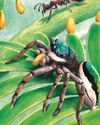
Jump Around - Bagheera Kiplingi - The acrobatic spider with a predilection for veggie food
Spiders eat flies, right? everyone knows that the 45,000 or so spiders in the world are all obligate carnivores, more or less – eating other animals, mainly invertebrates. Nature, however, loves an exception, and one particular spider missed out on that ecological memo. It goes by the wonderful scientific name of Bagheera kiplingi, and its claim to fame is that its diet is – at least mostly – vegetarian.
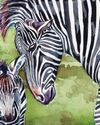
Female of the Species - Zebras - A strong sisterhood is key to staying safe
Zebras are masters of confusion. Their collective noun is ‘a dazzle’, which is fitting since their bodies and behaviour have been surprising scientists for centuries.
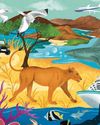
See It, Save It? - Wildlife tourism can be a powerful ally in protecting nature - but it can also harm it. We weigh up the pros and cons.
The sums of wildlife travel aren’t as simple as more tourists equals happier nature. How much did my visit really contribute to the conservation of Lady Liuwa and her habitat – and was that outweighed by carbon emissions from my flights? Did my presence disturb the animals’ natural behaviour more than it reduced the threat of poaching or benefited local communities?The question of whether wildlife travel is, on balance, good for wildlife is a complex one – and there’s no simple answer.

Can Your Really Offset Emissions? - Planning an overseas wildlife-watching trip entails facing some inconvenient truths
Imagine (or maybe you don't need to) that you hanker after the safari trip of a lifetime in sub-Saharan Africa. A 17-day tour beginning at the iconic Victoria Falls, passing through Zimbabwe, Zambia, Malawi and Tanzania, taking in some of the continent’s most wildlife-rich national parks, and ending on the lush island of Zanzibar.
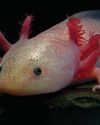
Metamorphosis: a life-changing event
WITH EVOLUTIONARY BIOLOGIST JV CHAMARY
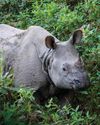
New series for BBC One: Asia
Settle in this autumn for a new natural-history extravaganza on BBC One and iPlayer: the longawaited Asia, presented by Sir David Attenborough.
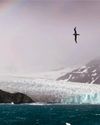
Loss of Antarctic sea ice could impact seabird food supply
Albatrosses and petrels may be forced to fly further to feed
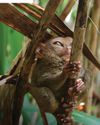
Tarsiers in trouble
Urgent action is needed to ensure survival of the Yoda-like primate

SNAP-CHAT
Chien Lee on shrew loos, rogue drones and being rained out of bed
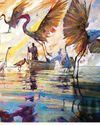
VISIONS OF NATURE
The winners of the Wildlife Artist of the Year competition 2024, from David Shepherd Wildlife Foundation